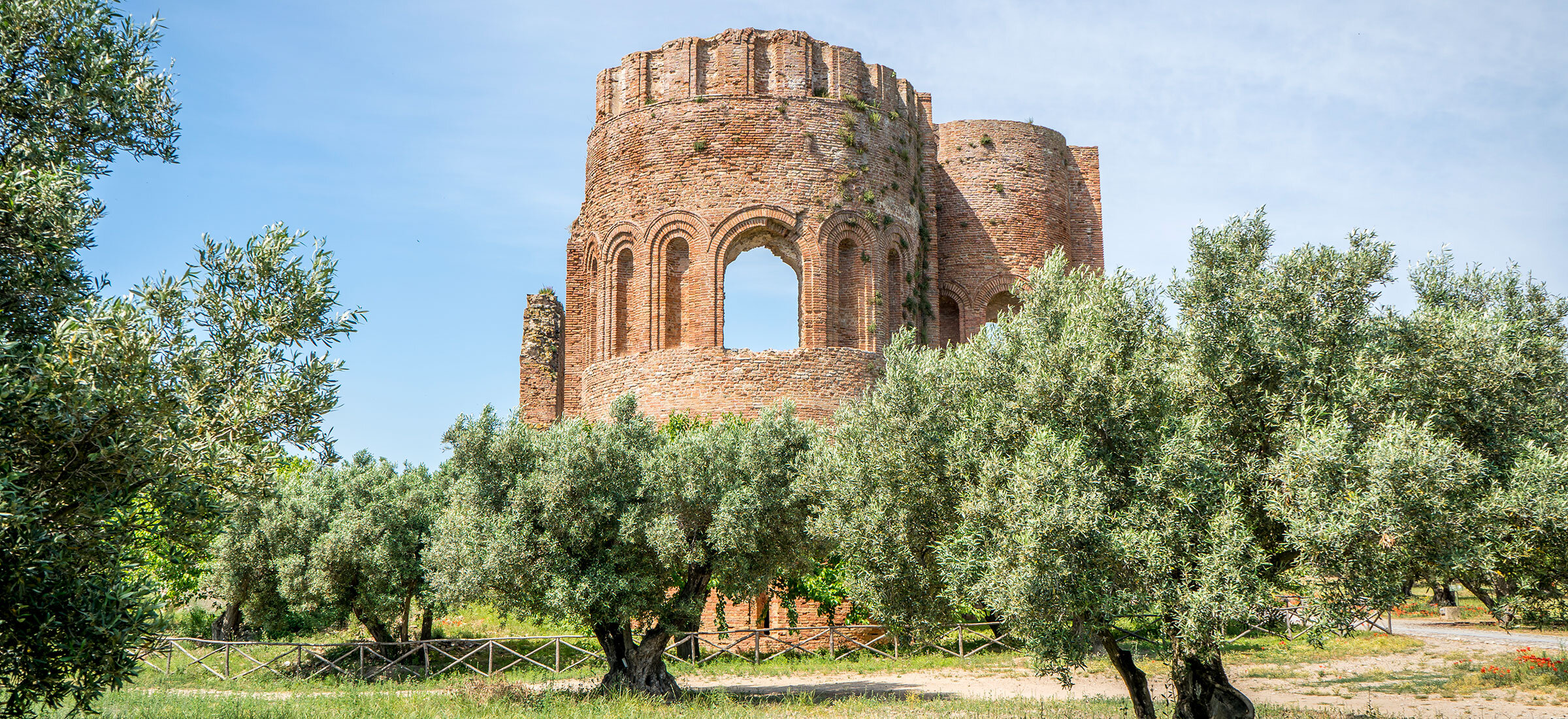Visit Catanzaro
Catanzaro is both the administrative and political capital of the region.
The “citadel” of the Calabria region, seat of the political power, arose in the Germaneto area – in the valley crossed by the Corace river.
In Germaneto there are the Giunta, which governs, and the departments from which the administrative acts come out.
The Regional Council (small parliament) is instead located in Reggio Calabria.
Catanzaro, where the brilliant artist Mimmo Rotella was born
Catanzaro was the birthplace of the décollage artist Mimmo Rotella, who lived here in the family home before traveling the world and achieving an amazing fame.
The historical center of Catanzaro, on a hill, can be reached by crossing enormous and spectacular road infrastructures, such as the Bisantis bridge (1962), an engineering masterpiece.
Catanzaro city tour:
taste the typical food
Core Calabro suggests a tour in Catanzaro to discover significant and hidden stories.
Then, stop in the streets to taste the succulent morzello (morzeddhu).
It consists of several parts of veal (including entrails) in a spicy sauce, inside homemade pitta (bread).
We also recommend a guided tour of the “Brigata Catanzaro” Military History Museum.
The greatest Calabrian painter
Those who arrive in Catanzaro, on holiday, cannot fail to take a trip by car to the village of Taverna di Catanzaro.
In this village at the foot of the Sila Piccola there is a permanent exhibition of magnificent works by Mattia Preti, also known as Cavalier Calabrese. He is a key figure in seventeenth century painting.
We may consider him as someone guided by the same gracefulness that was inside the great Caravaggio.
Awesome sea on the Ionian coast:
breath-taking beaches from Botricello to Soverato
The stretch of coast that includes the beaches of Botricello, Cropani Marina, Sellia Marina, Simeri Crichi, Catanzaro Lido, Squillace, Stalettì, Montauro, Montepaone, Soverato, down to Punta Stilo, well, that’s undoubtedly one of the most beautiful coastal landscapes in Southern Italy.
Tourists are enchanted by the vision of the golden beach of Copanello.
Tourist is shocked by the shades of emerald green and turquoise that characterize the waters of Caminìa and Pietragrande, made even more suggestive by the cliff.
Soverato has been one of the most popular seaside resorts for some time. And today it can offer well equipped hotels and beaches.
Scolacium park, archaeological site
Wandering on the Ionian coast, an obligatory stop&visit is Scolacium. We can describe it as the Roman archaeological Calabria.
Here, in Roccelletta di Borgia, you enter a well-kept green park from which the beautiful ruins of an ancient Roman colony emerge.
Calabrian nice stories in San Floro
From Scolacium, traveling by car, you can easily explore the hinterland to learn about wonderful stories that speak of future and work.
Core Calabro can lead you to San Floro. Here you can admire the tenacity of the guys of Nido di Seta, who have resumed the production of silk (and sericulture).
They consider them again the centre of local economic life, bringing San Floro to the national limelight.
Let’s talk about devotion to the land.
The desire to recover and value the ancient wheat, ground in stone, has instead inspired the enterprise of Mulinum, always in San Floro.
Amazing bread and pizza.
Tourist road trip along the SS 106
The journey to discover the deepest Calabria is a journey where you always meet something unexpected.
Rolling south, a slow ride that takes us Southern Italy, along Strada Statale 106, is a fabulous experience.
We recommend a visit to the tempting village of Badolato.
The territory is sun-kissed, you feel good. The vision of Badolato captures travelers with landscape views that belong to the category of the picturesque.
The village is extraordinary in terms of social vivacity, the community is industrious, despite being at risk of depopulation.
The ancient Kaulon in Monasterace archaeological park
And finally… we point out an unmissable break, in Monasterace Marina.
It’s for those who are curious to deepen the archaeological knowledge of the region.
We are in the province of Reggio Calabria, the first tourist attraction that tourists visit after the province of Catanzaro.
Stop at the Ancient Kaulon Museum and Archaeological Park, a magical place where some sensational archaeological excavations have brought to light mosaics that have a very refined chromatic layout.
Among the sensational discoveries, the most famous Dragon of Calabrian archeology stands out, preserved in a room of the museum after a long stay at the archaeological museum of Reggio Calabria.
Mattia Preti
Civic museum managed by the municipality of Taverna, housed in the fifteenth century Dominican convent. Follow the Strada Statale 109 reaching the Sila Piccola, then turn off for the Strada Provinciale 25 and again for the Strada Provinciale 24, to finally take the Strada Statale 109 back into the village of Magisano. A bit tortuous path.
Mattia Preti was born in Taverna di Catanzaro in 1613 and died in the city of Valletta (Malta) in 1699. Surely attracted and influenced by Caravaggio, he was trained in Rome and was then in the Kingdom of Naples one of the artists most called by noble and institutional clients. In the Neapolitan area we want to remember a series of paintings: on the ceiling of the church of San Pietro a Maiella, with Stories from the life of Saint Peter Celestine and Saint Catherine of Alexandria; the two versions of the Prodigal Son who are today at the Capodimonte museum and at the Palazzo Reale in Naples; the San Sebastiano for the church of S. Maria dei Sette Dolori and the Madonna di Costantinopoli in the church of Sant’Agostino agli Scalzi.
You pay ticket to visit. For schedules and info on events: +39 0961 023674.
MUSMI
It is located in the heart of the Biodiversity Park, not far from the Pugliese-Ciaccio hospital.
It is a museum focused on military topics that offers the possibility of admiring memorabilia, weapons, uniforms and documents relating to the struggles and military battles of the 19th and 20th centuries – from the wars of the Napoleonic French Decade to the Second World War.
Large parking area, you pay ticket to visit.

